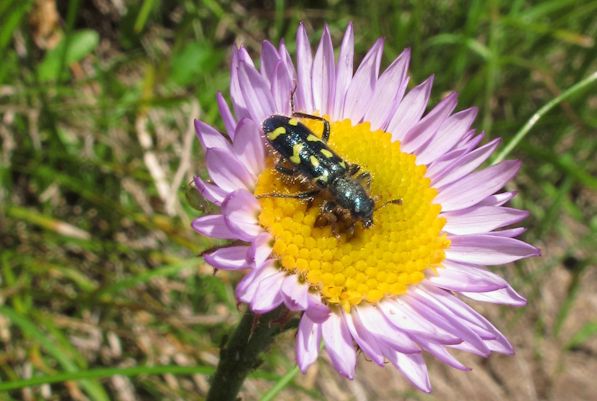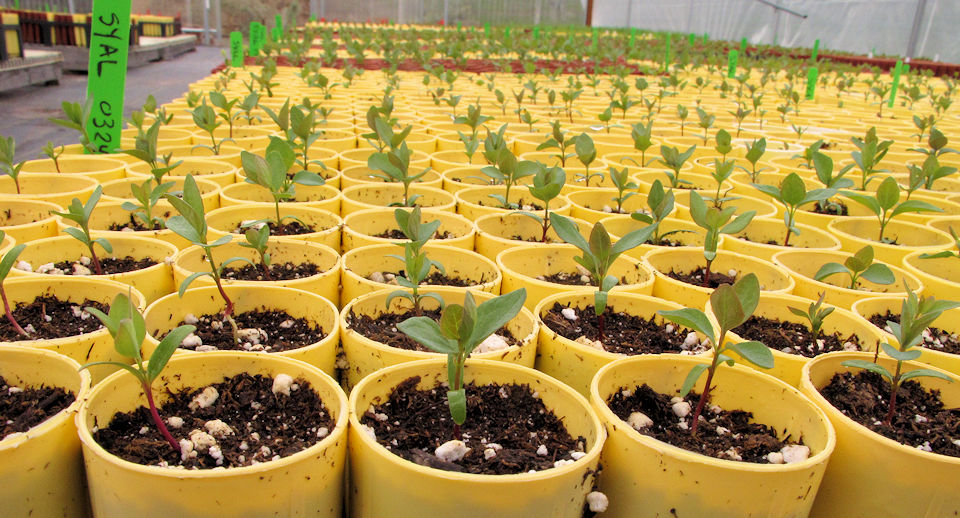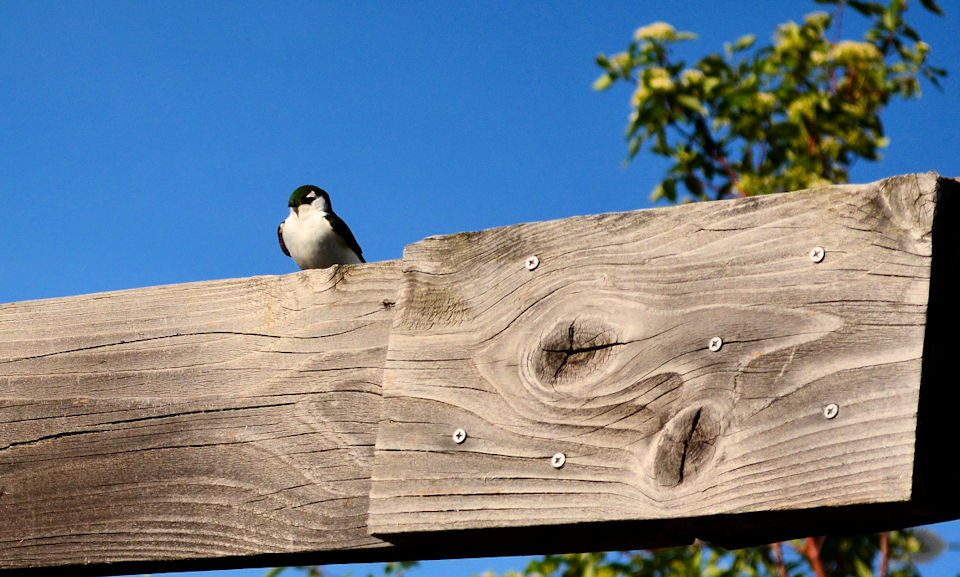Attracting MORE Insects with Native Plants: Part 3 – Bird Food and Biological Control
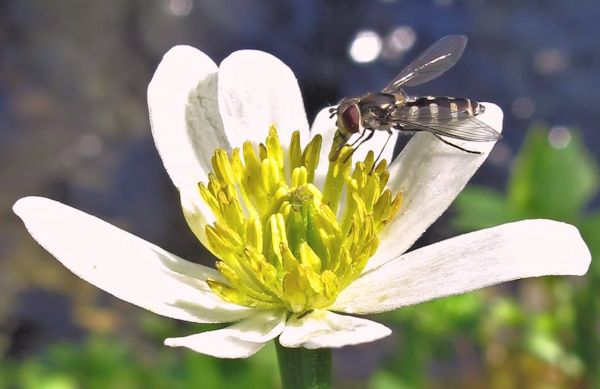 Syrphid fly (larvae are aphid predators) on marsh marigold (Caltha leptosepala)
Syrphid fly (larvae are aphid predators) on marsh marigold (Caltha leptosepala)
Native plants are the key to attract native fauna. Many of us want to see more of the larger, more colorful and charismatic representatives of local wildlife, like birds, butterflies and even native bees. The native flora we enjoy are also critical to a vast array of smaller insects we are often unaware of, insects that are integral components of a healthy, resilient ecosystem. These insects include predators and parasites providing biological control as well as insects that are food for birds, fish and other vertebrates.
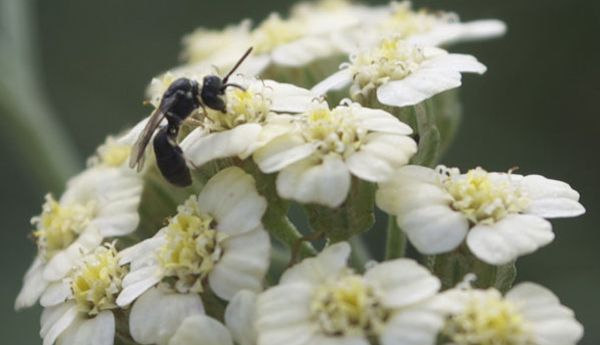 Parasitic wasp on yarrow (Achillea millefolium) – Photo by Steve Masley
Parasitic wasp on yarrow (Achillea millefolium) – Photo by Steve Masley
My college education focused on entomology and at one time I worked with orchardists on developing more effective pest control programs, both for WSU and as a private consultant. It was clear that biological control of many tree fruit pests increased with closer proximity to native habitat, which served as a reservoir of predators and parasites. Farmers that used a softer pest control program, including organic growers, often had more effective and less expensive control of many pest species. The same can be seen in home landscapes with diverse plantings with native plants.
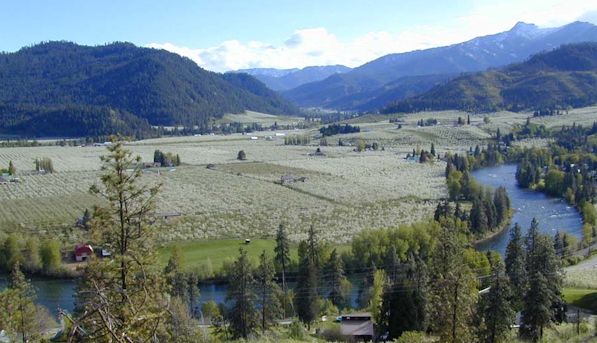 Native habitat adjoins many orchards in the Wenatchee Valley (Peshastin Flat seen here)
Native habitat adjoins many orchards in the Wenatchee Valley (Peshastin Flat seen here)
Over 90% of insect species are specialists whose existence requires specific plants. A diversity of plants leads to a diversity of insects and a more stable and productive ecosystem. All song birds need protein-rich insects to feed their growing young, even if as adults they consume only seeds and fruits. Native fish also get a significant amount of their diet from insects growing on, and falling from, waterside vegetation.
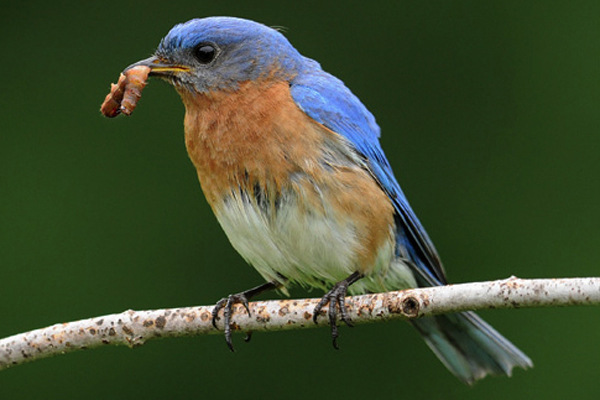 Western bluebird with caterpillar
Western bluebird with caterpillar
The most important thing you can do for increased insect diversity is maximizing the area planted to native plants with species appropriate to your locale. Minimizing the area of lawn helps as lawns are pretty much biological deserts, as well as water, fertilizer, gasoline and time sinks. What are some key native plants to include in the home landscape to increase insect diversity? Dr. David James, entomologist with Washington State University in Prosser, is investigating native plant species that are especially suited for attracting and retaining insects that enhance biological control. Among his key plants, suitable for sites east of the Cascades, are:
- Showy milkweed (Asclepias speciosa)
- Wild buckwheats (Eriogonum sp.)
- Orange globemallow (Sphaeralcea munroana)
- Gray rabbitbrush (Ericameria nauseosa)
- White clematis (Clematis ligusticifola)
- Wood’s rose (Rosa woodsii)
- Lewis’ mock orange (Philadelphus lewisii)
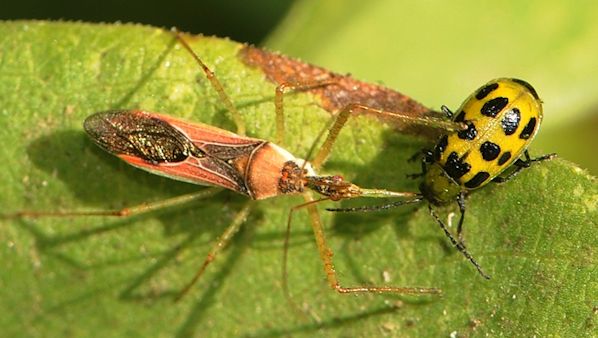 Assassin bug feeding on cucumber beetle – photo by Kathy Garvey
Assassin bug feeding on cucumber beetle – photo by Kathy Garvey
To learn much more about the benefits of planting diverse landscapes visit www.ecosystemgardening.com and www.plantanative.com. Dr. Doug Tallamy, entomologist with the University of Delaware, has done extensive research in this area: learn more at //bringingnaturehome.net/ Finally, Dr. David James of WSU has just put out a online publication, “Beneficial Insects, Spiders, and Other Mini-Creatures in Your Garden” that may make you an insect enthusiast if you’re not already. Find it at //cru.cahe.wsu.edu/CEPublications/EM067E/EM067E.pdf





